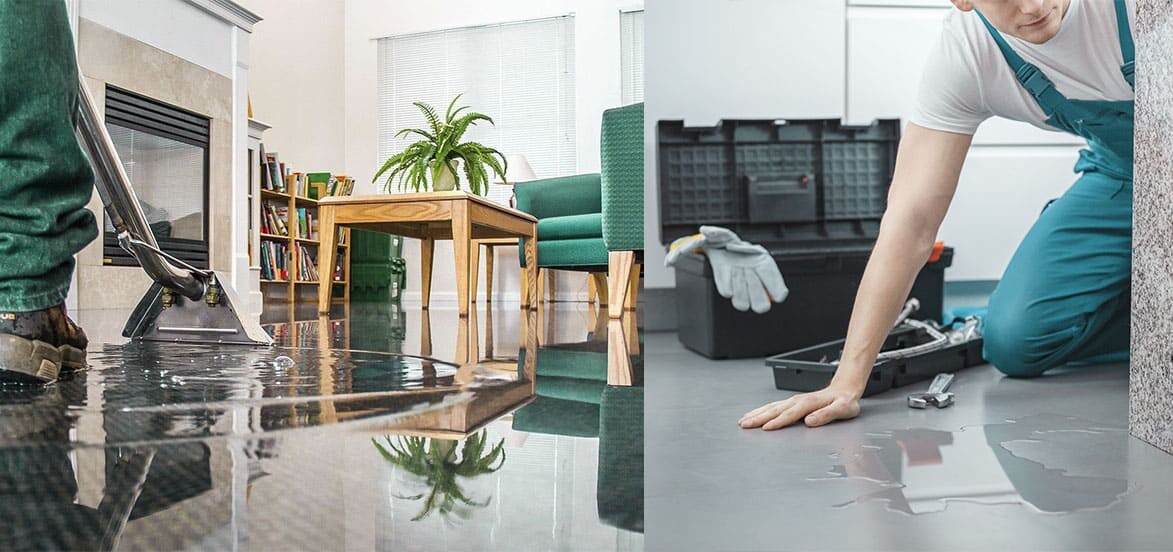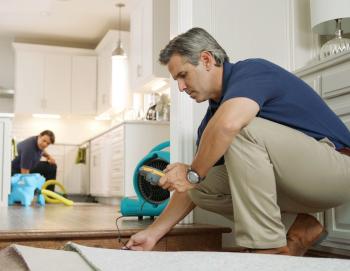Top criteria to review when hiring Water Damage Restoration specialists
Top Tips for Effective Water Damage Restoration: Protect Your Residential Property Today
Water damage can strike suddenly, creating considerable disruption and possible risks. Efficient restoration calls for a systematic strategy to reduce further injury. From assessing the damage to executing safety nets, each step plays a crucial duty in safeguarding building. Comprehending these approaches can make all the difference in the after-effects of a water-related dilemma. What vital activities should be prioritized to assure complete protection?
Examine the Damage Right Away
When a water damage event happens, it is necessary to assess the damage quickly to minimize additional concerns. This initial examination aids figure out the extent of the damage and identifies impacted areas. Water can permeate right into walls, floors, and furniture, leading to mold development and architectural instability otherwise resolved promptly. An extensive inspection ought to include looking for discoloration, moisture, and mildewy smells, which show moisture presence. It is also important to document the damage through photographs and notes for insurance policy purposes. Engaging experts for a much more thorough analysis might be necessary, particularly when handling surprise or comprehensive damage. Flood Cleanup Services. Early acknowledgment and precise evaluation lay the foundation for reliable restoration and secure the home from additional problems
Turn off the Water System
Shutting down the supply of water is a crucial action in stopping further damage throughout a water-related incident. When a leak or flooding happens, prompt activity is important to minimize the level of the damage. Situating the major water shut-off shutoff ought to be a top priority. This shutoff is typically located near the water meter or where the water line enters the home. Once located, turning the shutoff clockwise will quit the circulation of water. In instances where the primary shutoff is inaccessible, individual shut-off shutoffs for appliances might also be utilized. Without delay shutting off the water supply not just secures the building from additional damage however also helps with the subsequent restoration procedure, making certain that healing initiatives can begin immediately.
Eliminate Excess Water Quickly

Getting rid of excess water without delay is crucial for minimizing damage and preventing mold growth in affected locations. The longer water remains touching materials such as drywall, timber, and insulation, the greater the risk of structural damage and the development of mold. Water Damage Restoration. Homeowners should act rapidly to assess the situation and use proper devices, such as wet vacuum cleaners or pumps, to remove standing water effectively. If the volume of water is considerable, contacting expert restoration solutions may be needed, as they can provide specialized equipment and experience. Furthermore, removing furnishings and items from the affected area can aid to reduce damage and promote the overall restoration process. Prompt action not just protects property but likewise help in a smoother healing journey
Dry Out the Affected Area
After getting rid of excess water, it is vital to dry out the afflicted location extensively. This involves removing any standing water and boosting air circulation to facilitate dissipation. Reliable drying will certainly help prevent mold growth and additional damage.

Remove Standing Water
Quickly dealing with standing water is critical for reliable water damage restoration. The visibility of stagnant water can lead to further building damage and produce a setting for mold and mildew development. To mitigate these dangers, it is important to get rid of standing water as rapidly as feasible. This process usually includes making use of submersible pumps, damp vacuums, or specialized removal devices. Experts advise examining the depth and degree of the water before choosing the proper method for removal. Safety precautions should likewise be taken, including using safety equipment and ensuring electricity is shut off in impacted areas. Once the standing water is properly gotten rid of, the drying process can start, better securing the residential property from continuous damage.
Rise Air Blood Circulation
Enhancing air blood circulation is crucial for effectively drying out areas affected by water damage. This procedure assists to quicken dissipation, minimizing the threat of mold and mildew growth. Professionals often suggest making use of followers to produce a steady air movement throughout the room. Putting box followers in windows can reel in fresh air, while high-velocity fans can guide air flow towards wet surfaces. Water Damage Restoration. In addition, opening up windows and doors enables cross-ventilation, improving the drying process. Dehumidifiers can likewise be utilized to eliminate excess dampness from the air, more aiding in drying out. By guaranteeing that air distributes easily, homeowner can considerably minimize the long-term effects of water damage and shield the integrity of their structure
Inspect for Mold Development
Mold development is a severe issue complying with water damage, as it can bring about health and wellness problems and structural degeneration. After any flooding or leaks, it is important to carry out a complete evaluation of the influenced locations. This consists of checking hidden rooms such as behind walls, under carpetings, and in attic rooms or cellars where wetness might remain. Indicators of mold and mildew include a stuffy smell, discoloration on surfaces, or noticeable growth. Building owners must utilize protective gear when checking, as mold spores can present health threats. If mold and mildew is spotted, it is crucial to address it right away, as postponing removal can exacerbate the problem and increase the threat of severe health concerns for passengers. Early treatment is crucial to reliable mold administration.

Repair Service and Recover Broken Frameworks
When dealing with water damage, it is necessary to first analyze the architectural honesty of the impacted locations. This assessment assists identify potential risks and notifies the essential repair service techniques. Involving specialist restoration solutions guarantees that the restoration process is performed securely and efficiently.
Analyze Structural Integrity First
Before starting any type of water damage restoration, it is important to examine the architectural honesty of the affected area. This analysis aids recognize any kind of endangered components, such as wall surfaces, foundations, or beams, which might posture security dangers - Water Damage Restoration. Checking for indications of warping, cracking, or mold and mildew growth is essential, as these indications can disclose underlying damage that requires immediate attention. In addition, recognizing the extent of the damage can direct restoration initiatives and establish whether repair services are viable or if substitute is needed. It is very important to record searchings for completely, as this information can be valuable for insurance cases or future referral. Focusing get more info on architectural analysis warranties that restoration initiatives proceed safely and efficiently, ultimately shielding the residential property and its passengers
Use Professional Restoration Services
Making use of expert restoration services is essential for effectively fixing and recovering damaged structures after water incidents. These specialists possess the essential training, tools, and experience to reduce and analyze water damage thoroughly. They can recognize concealed problems, such as mold and mildew growth and architectural weaknesses, that might not be promptly evident. Specialist services additionally use innovative drying strategies and equipment, guaranteeing that all wetness is eliminated to avoid more damage. Additionally, they stick to sector criteria and policies, ensuring that the restoration process is safe and effective. By engaging restoration professionals, residential property owners can speed up recuperation, decrease long-lasting damage, and inevitably shield their financial investment. This proactive technique is necessary in maintaining the honesty and security of damaged frameworks.
Avoid Future Water Damage
To successfully stop future water damage, property owners should take on a proactive approach to repair and maintenance. Regular assessment of roofs, downspouts, and rain gutters is essential; clogged gutters can cause water overflow and roof leaks. Additionally, inspecting for leaks in plumbing fixtures and appliances can thwart prospective damage. Property owners must also take into consideration setting up sump pumps in basements or low-lying locations to handle water buildup. Sealing cracks in structures and making certain correct water drainage around the residential property are essential steps in safeguarding versus water intrusion. Maintaining humidity degrees with dehumidifiers can protect against mold growth. By carrying out these precautionary steps, property owners can considerably decrease the risk of water damage and secure their home for the long-term.
When a water damage event occurs, it is essential to assess the damage right away to alleviate further issues (Water Damage Restoration). Getting rid of excess water quickly is important for minimizing damage and protecting against mold growth in affected locations. Quickly addressing standing water is crucial for efficient water damage restoration. The presence of stagnant water can lead to further home damage and develop a setting conducive to mold development. Before launching any water damage restoration, it is essential to analyze the architectural stability of the afflicted area